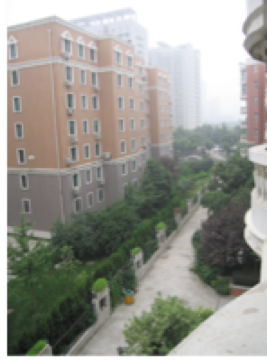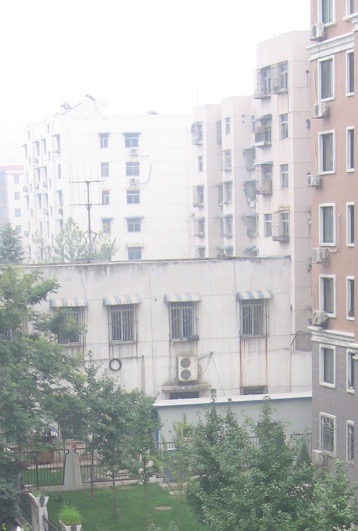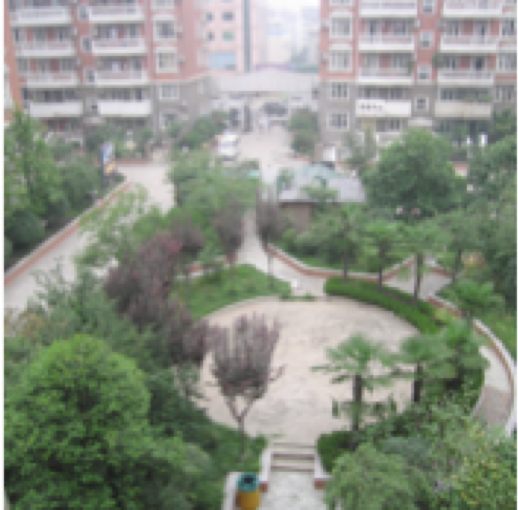Urban micro-geography:
The streets are a comfortable two lanes in residential areas, with tree-lined pavements. The paving is of 200mm concrete squares, with those stippled slabs sloping to the road surface for kerb crossings and the other kerb is higher at junctions to help keep the traffic in the road. The roads are of good quality here and the traffic works hard at not stopping. There is little change of pace and everyone relies upon this state to calculate what they will do in consequence. So it is common for pedestrians to apparently saunter across a junction; the insouciance is cultivated, even practised, but carefully calculated. Add into this mix that a red light does not apply to most turning traffic and never to traffic turning right, and crossing the road is something that is taking a while to do with any peace of mind. Apart from the inbuilt habit to look the wrong way, the traffic lights aren’t a reliable indicator at all. Just like Cambridge, bicycles take little notice of anything. The bigger roads, let me call them boulevards, are in effect dual carriageway, but made wider by there being what I will call a service road on each side. So a boulevard has probably six or eight lanes available, where the pedalled bicycles and cycle carts stay in the service lanes at all times, battling with the parking cars and deliveries and wandering pedestrians. Between service road and carriageway is usually a small planted strip, maybe half a metre wide but sometimes bigger, with a median strip to the main carriageway of a similar size. At junctions with lights there is then a large open area, much bigger than we are used to in the UK, where traffic crosses in a surprisingly co-operative manner, which may go some way to explaining the lack of constant sirens (yi-err-yi-err) that Plymouth and Cambridge suffer from. Turning right (driving on the right) is done irrespective of lights; turning left is done when there is space or controlled by lights. Going straight on is held up by the lights, which count down in seconds to the next change on huge overhead gantries set up to be read on the far side of the junction. Compared to India, where the blare of horns guarantees no future market in in-car entertainment, China is quiet.
The urban noise, apart from the sound of busy construction, is people. The typical Chinese is on the phone, even more than a Brit but maybe equivalent to our teenagers, and apparently trying to be heard without the benefit of the electronics. To those at PMC, visualise Chris Gatherer taking a soccer match; even from a distant classroom, he sounds as if he has a loud-hailer, but he is simply loud. That is a Chinese on the phone. The pavements are not as crowded in Gaoxin as they are in the city centre, where I could not go running at any time of day or night. Here there is space, but too much heat. Even so, I walk 50% faster than the fastest walker I have met yet, so I stick out in so many ways. Obviously Gaijin, one of the very few men with beards (except on the huge advertisements where mine would be typical, if a little thick), more sunburned than most of them, wearing huge glasses by their standards (the many specs are with small rectangular lenses), a little physically bigger, but taking up far more space – and quick over the ground without appearing to stretch or hurry.
There are bicycles everywhere. Yet I do not see where bicycles are left. At school I found a bike rack, but I don’t see one outside the shops and yet I do see people with luggage. The idea that there might be a limit to what a bike might carry is tested on a daily basis here and in India. The surfaces are better here, so the limits are higher. A few of the bikes have motor support: smart urban ones with what looks and sounds like electric flywheel assistance and poorer, usually high capacity carts with low power, fuel-based assistance.
The buildings are laid in a basic grid with occasional hiccoughs. The block (in the US sense) size is variable and in residential districts where we would have a pedestrian way through, they don’t. I live in building 6, staircase 4, floor 4, room 1 of the two on this landing, hence my address may be 6-4-401 Hung Jing Garden, but it says HUNGJINGGARDE over the gate. There are, judging by the mailboxes, some four hundred apartments.

This picture shows the front entrance as viewed from my kitchen window. My rear balcony is much like those visible. The gated entrance has guards supervising the passage of vehicles and possibly recognising most of the entrants. I can’t tell: it is not an obvious security, more of a presence. They allegedly patrol at night, which is a good thing because there is no such thing as house contents insurance here; they have no grasp of the concept, worthy of a Python sketch… … What, I give you money in the hope that I am burgled? And when that happens you pay me some money? What happens if I am not burgled? You keep the money? Why would I do this? ….. you know the idea. The perception of security is more important than the actuality, but that is something we see worldwide. I cannot agree with such ideas, not being a believer in self-deceit - not knowingly, anyway and surely relatively less than most.
The picture on the right shows the rear right view from my balcony. You can see the boundary fence separating this estate from the similar one on the other side of the block. The walking distance to these flats is approaching a kilometre. Given that my flat has two windows one side and one balcony the other, this suggests that we can see seven floors and five sets of three windows, so maybe around a hundred dwellings, though I can’t tell how the communication space is arranged. You can see that the buildings are typically seven stories high, with a basement level lost to plant rooms and support storage. Several of these extended buildings make an estate. The estates fit into what I am calling a block, but meaning the rectangular space between roads. In my building, the staircases supply flats in pairs. and several buildings make an estate.

This next picture shows the view to the rear and left of my flat. You can see the staining on the concrete of next door. The idea of maintaining buildings is not understood, partly because labour is cheap and construction workers cheaper still, so new means good at the moment. This is not a healthy idea and is not good for the country as a whole: the economy is booming to such an extent that the locals are getting lost because they find no points of reference in their memory. Someone who has been away at college will be lost by virtue of failing to find old reference points. This is a bad enough problem in Britain’s towns and cities, but here everything is so immediate. The Head (think Chancellor, since the establishment is 7000) suggested we (whoever ‘we’ might be) should have a new building for the English-based courses, suggesting that the building would be up and occupied in six months. Doing something like that in the UK would be considered fast in three years, at least one of which would be spent gaining permission, let alone doing the design.
The smog levels are high today; the air is still, hot & humid, the sun is not burning through like it did yesterday, when I could see blue sky. Today the tower block in the front view is almost gone.
DJS 20070826
